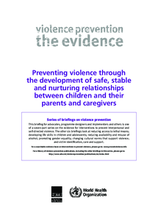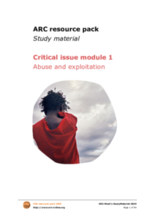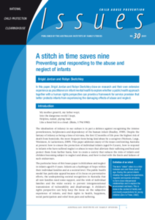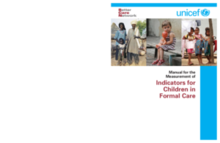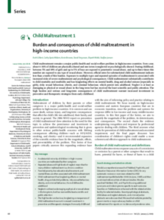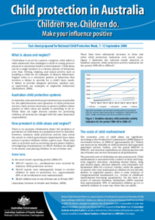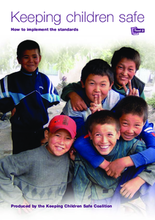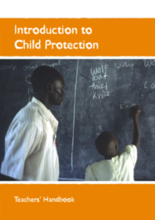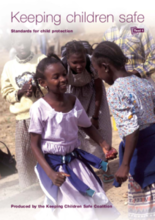Displaying 971 - 980 of 1054
This briefing looks at the effectiveness of interventions that encourage safe, stable and nurturing relationships for preventing child maltreatment and aggressive behaviour in childhood. The focus is on primary prevention programmes, those that are implemented early enough to avoid the development of violent behaviour such as child maltreatment and childhood aggression.
This module aims to provide guidance on essential aspects of child abuse and exploitation, highlighting the main forms of abuse and presenting some possible action against it.
In this paper, the authors commence by discussing the over-representation of infants in child protection services in Australia, the vulnerability of infants and infancy as a foundational developmental stage for later outcomes.
Manual to assist countries in strengthening their information system around children in formal care through data collection around 15 global indicators
This paper is the first in a series of four papers that aim to critically assess the expanding evidence base on child maltreatment with the aim of informing policy and practice relating to child maltreatment. The series focuses mainly on high-income countries and eastern European countries that are in economic transition, since the problem and systems for response differ in low-income and many middle-income countries. This first paper of the Series aims to quantify the magnitude of the problem, its determinants, and consequences.
This fact sheet was prepared by Prue Holzer from the Australian Institute of Family Studies to provide a brief overview of the Australian child protection context.
The second tool in the Keeping Children Safe Toolkit which is a resource pack that provides guidance and activities to organisations ing meeting established standards
A handbook that identifies and addresses issues of child protection in education in Southern Sudan, and mobilizes communities into action to make schools protective and nurturing learning environments.
The third tool in the Keeping the Children Safe Toolkit builds upon the development and implementation of standards portions to address training staff on protocol
The first tool in the Keeping Children Safe Toolkit which explains what the basic standards should be for all organisations across the world working with and for children directly and indirectly

